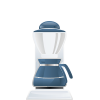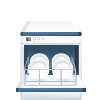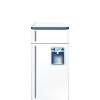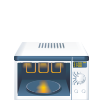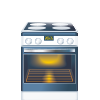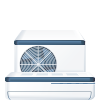Capillaries are a vital part of the circulatory system, playing an essential role in the transport of blood throughout the body. While usually eclipsed by the much more widely known arteries, veins work as the crucial pathway for deoxygenated blood to go back to the heart as well as lungs for replenishment. In this write-up, we will look into the intricacies of veins, exploring their framework, function, and relevance in maintaining general wellness.
The Structure of Blood vessels optiheart comentarios
Veins are capillary that carry deoxygenated blood (with the exception of the pulmonary blood vessels) from the different cells and body organs back to the heart. Structurally, blood vessels vary from arteries in several key ways:
1. Size: Capillaries are usually bigger in size contrasted to arteries. This is due to the fact that capillaries carry blood at a lower stress, calling for a bigger lumen to fit the slower flow.
2. Valves: Capillaries have one-way valves throughout their length, making sure that blood streams in the right instructions. These shutoffs avoid the heartburn of blood, advertising effective flow.
3. Wall Surface Density: Veins have thinner wall surfaces consisted of 3 layers: an outer connective cells layer, a center smooth muscle mass layer, and an internal endothelial layer. This thinner wall structure allows blood vessels to expand and also contract to fit blood quantity adjustments.
4. Networks: Veins develop an interconnected network throughout the body, with smaller blood vessels converging into larger vessels known as venae cavae, which eventually return blood to the heart.
- Superior Vena Cava: It collects blood from the top body, consisting of the head, neck, arms, as well as upper body.
- Inferior Vena Cava: This capillary gathers blood from the reduced body, consisting of the abdomen, pelvis, as well as legs.
Generally, the structure of blood vessels enables efficient blood return to the heart while preserving a consistent circulation, ensuring that oxygen-depleted blood gets to the lungs for oxygenation.
The Feature of Blood vessels
The key function of capillaries is to deliver deoxygenated blood back to the heart for reoxygenation. This includes a complex interplay of numerous factors and devices:
1. Venous Return: Capillaries promote venous return, the process of blood returning to the heart. This is attained through a mix of factors such as skeletal contraction, respiratory motions, and the existence of one-way valves. Skeletal muscle contractions, specifically in the legs, work as a pump, pressing the capillaries and thrusting blood towards the heart.
2. Blood Quantity Law: Veins play a crucial duty in maintaining blood volume in the body. By readjusting their size as well as capability, blood vessels can store blood, helping to regulate and maintain blood pressure. In circumstances where blood quantity requires to be boosted, such as during exercise or in feedback to injury, capillaries can constrict to redirect blood circulation to the required locations.
3. Heat Law: Veins likewise contribute to the body’s temperature guideline. Blood flow through surface veins simply under the skin can raise or lower depending on exterior temperature level problems. When the body requires to cool, blood circulation increases to the surface of the skin, permitting excess warm to dissipate via sweating.
The Significance of Capillaries in Overall Wellness
Veins are important for keeping general wellness and health. Any type of disturbance or dysfunction in the venous system can lead to various wellness concerns, including:
- Varicose Veins: These are bigger as well as twisted veins that typically happen in the legs. They can trigger discomfort, pain, and also aesthetic problems. Varicose veins are frequently the outcome of weakened valves or boosted pressure within the blood vessels.
- Deep Blood Vessel Thrombosis (DVT): DVT is a blood clot that develops within a deep blood vessel, usually in the legs. If the clot breaks free and travels to the lungs, it can create a deadly condition known as a lung blood clot. DVT can result from factors such as prolonged lack of exercise, injury, or specific medical problems.
- Persistent Venous Lack (CVI): CVI occurs when the blood vessels are not keramin psoriasi prezzo able to effectively return blood to the heart. This can result in signs and symptoms like swelling, pain, and skin adjustments. CVI is often related to varicose veins and can be triggered by a variety of elements, including genes, obesity, and prolonged standing or resting.
To keep healthy veins and prevent these conditions, it is essential to embrace specific way of life practices such as routine workout, maintaining a healthy weight, preventing long term resting or standing, as well as wearing compression stockings when necessary. Additionally, seeking clinical attention at the initial signs of venous problems can help protect against better difficulties.
To conclude
Veins are a basic component of the blood circulation system, responsible for returning deoxygenated blood back to the heart. Their special structure, integrated with different physical systems, permits effective blood circulation and plays a critical duty in total health and wellness. Comprehending the function as well as value of veins can assist people make notified options to maintain ideal venous health and wellness as well as avoid potential problems.

